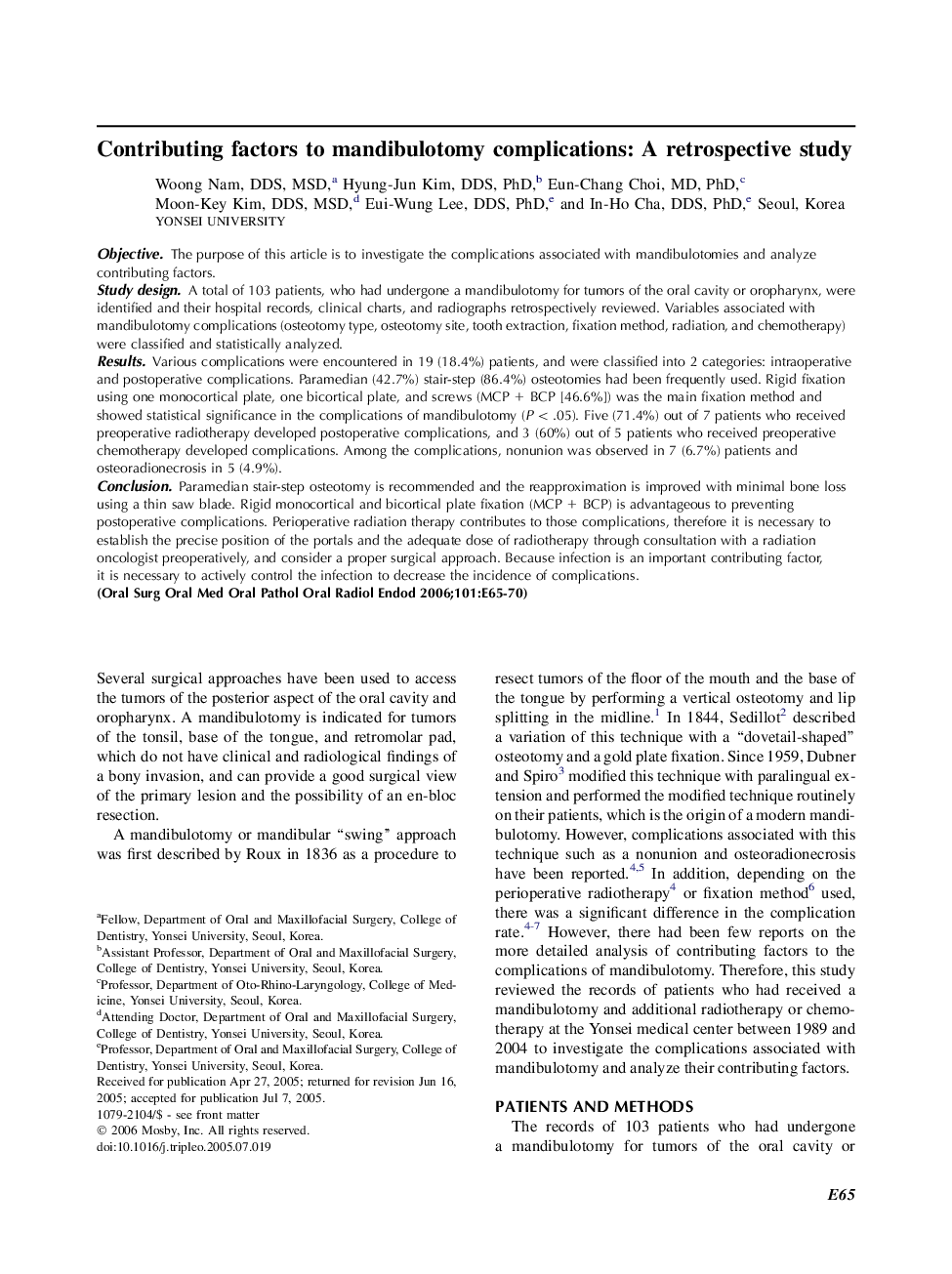| Article ID | Journal | Published Year | Pages | File Type |
|---|---|---|---|---|
| 3170124 | Oral Surgery, Oral Medicine, Oral Pathology, Oral Radiology, and Endodontology | 2006 | 6 Pages |
ObjectiveThe purpose of this article is to investigate the complications associated with mandibulotomies and analyze contributing factors.Study designA total of 103 patients, who had undergone a mandibulotomy for tumors of the oral cavity or oropharynx, were identified and their hospital records, clinical charts, and radiographs retrospectively reviewed. Variables associated with mandibulotomy complications (osteotomy type, osteotomy site, tooth extraction, fixation method, radiation, and chemotherapy) were classified and statistically analyzed.ResultsVarious complications were encountered in 19 (18.4%) patients, and were classified into 2 categories: intraoperative and postoperative complications. Paramedian (42.7%) stair-step (86.4%) osteotomies had been frequently used. Rigid fixation using one monocortical plate, one bicortical plate, and screws (MCP + BCP [46.6%]) was the main fixation method and showed statistical significance in the complications of mandibulotomy (P < .05). Five (71.4%) out of 7 patients who received preoperative radiotherapy developed postoperative complications, and 3 (60%) out of 5 patients who received preoperative chemotherapy developed complications. Among the complications, nonunion was observed in 7 (6.7%) patients and osteoradionecrosis in 5 (4.9%).ConclusionParamedian stair-step osteotomy is recommended and the reapproximation is improved with minimal bone loss using a thin saw blade. Rigid monocortical and bicortical plate fixation (MCP + BCP) is advantageous to preventing postoperative complications. Perioperative radiation therapy contributes to those complications, therefore it is necessary to establish the precise position of the portals and the adequate dose of radiotherapy through consultation with a radiation oncologist preoperatively, and consider a proper surgical approach. Because infection is an important contributing factor, it is necessary to actively control the infection to decrease the incidence of complications.
